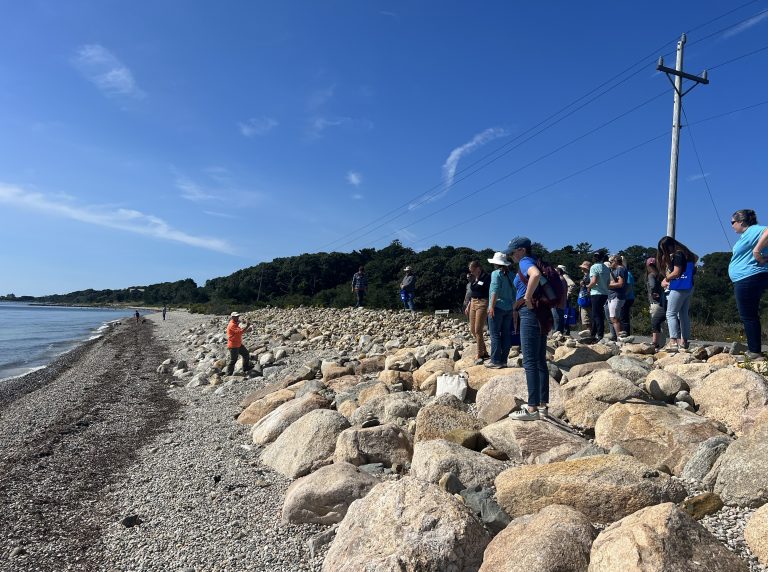Start Date: 2023
Summary
Project Team: Kirk Bosma, Brittany Hoffnagle, Annie O’Connell (Woods Hole Group), Rebecca Shoer (Stone living Lab)
In this project, the Massachusetts Office of Coastal Zone Management (CZM) has partnered with the Woods Hole Group and the Stone Living Lab to conduct a comprehensive monitoring initiative focused on cobble berms across Massachusetts. The project aims to evaluate the performance, effectiveness, and ecological impacts of cobble berms as nature-based solutions for coastal resilience.
The goal is to gain a deeper understanding of how these nature-based approaches function by observing geomorphological changes and impacts on surrounding ecosystems, including biological effects and the extent of salt marshes where applicable. By closely studying these sites, the project aims to expand our knowledge of cobble berms and their effectiveness as nature-based shoreline protection measures.
In addition, this project is developing an educational platform for local stakeholders including municipality staff, conservation commissions, academic researchers, students, non-profit leaders, and consulting practitioners to learn about cobble berms and nature-based approaches.
Background
A cobble berm is a mound of cobble-sized sediment typically constructed at the base of a coastal bank or to enhance a coastal dune to reinforce and protect it from erosion caused by waves and storms. The cobble berm absorbs wave energy and reduces the impact of waves on the coastal bank or dune, helping to prevent further erosion. While it requires periodic maintenance and can be damaged by severe storms, it provides an additional layer of defense and promotes shoreline stability.
Berms are known to be very effective shoreline protection measures, but we still have a more to learn about cobble berms in Massachusetts. We want to know how well they work over a long time, if they can be used in larger areas, and how they affect the environment and communities. This project will closely watch cobble berms all across Massachusetts to understand how they help protect the coast. By studying them carefully, we can learn how effective they are, how long they last, and if they are a good choice for our shores in the future.
Research Objectives
The goal is to gain a deeper understanding of how these nature-based approaches function by observing geomorphological changes and impacts on surrounding ecosystems, including biological effects and the extent of salt marshes where applicable. By closely studying these sites, the project aims to expand our knowledge of cobble berms and their effectiveness as nature-based shoreline protection measures.
Schedule
This project was completed in summer 2024!
